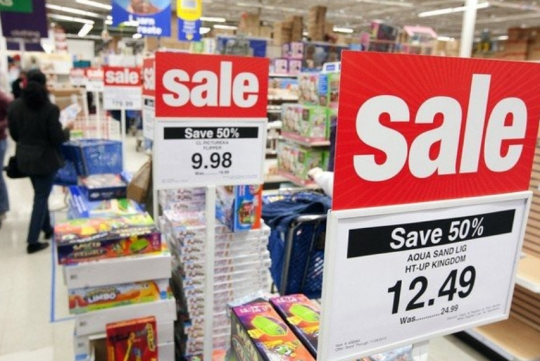
Last week, Retail
TouchPoints published Price
and Promotion Wars: How To Avoid A Race To The Bottom, illustrating
retailers’ need to:
- Combine product recommendations and promotions
to build basket sizes; - Use AI and dynamic pricing to hasten
decision-making and improve promotion structure; and - Sharpen seasonal demand forecasts.
The RTP team
shares their top takeaways from the report, including standout statistics and recommendations.
Debbie Hauss,
Editor-in-Chief: I am particularly drawn to
the term “emotional pricing,” as
referenced by Adheer Behulkar, an A.T. Kearney analyst. He talks
about the use of behavioral science tools in order to use all factors
motivating an individual shopper to make a purchase, such as the time of day
and the stage the consumer is in the purchase process. This takes the guessing
game out of the process of pricing and promotion. By integrating AI/machine
learning algorithms into the process, pricing and promotion decisions no longer
have to be completely 100% manual. I don’t advocate for 100% AI-controlled
pricing and promotions; I believe it should be a strong balance of human
perception and machine intervention.
Adam Blair, Executive
Editor: Researching and writing the Price and Promotion Optimization
Report, it occurred to me that I should have included a third “P,” for
Personalization. That’s hardly a surprise — personalization is increasingly
critical to pretty much every customer-facing aspect of retailing. What I’ve
learned in many years of reporting on this topic is that personalized pricing
shouldn’t mean that I pay $25 for the same item that someone else pays $50 for.
That’s how the airlines work, and no one should be emulating their pricing
structure. What personalized pricing should mean is that
retailers that are able to present items to a consumer at the time and
place when he or she is ready to buy will face much less price
resistance than those that can’t. I was heartened to hear from experts in the
field that most retailers already have the data and tools they need to make
this happen — they just have to develop a greater willingness to use them.
Glenn Taylor, Senior
Editor: I know consumers always love a good price, but I couldn’t help but
be caught off guard with the sheer amount of patience many customers display in
anticipation of a price dip. As many as 53%
of shoppers will wait as long as it takes
for an item they want to drop to a price, according to Forrester Research. If
I’m seeking out a good price and it’s not there, I’m going elsewhere, so that
was a surprise. When this is tied into the idea that retailers likely have the
data necessary to optimize pricing, I would hope that more retailers would
study just how far the “dip” goes, and understand their own floor price. With a
single system in place to track historical pricing trends and sales at each
price, retailers should be better positioned to determine when and how a less
generous promotion will draw in shoppers.
Bryan Wassel,
Associate Editor: One trend I’m seeing hit every aspect of retail, and it’s
certainly reflected in the Price and Promotion Optimization Report, is the
growing science of prediction. Retailers have access to an ocean’s worth of
data, and by properly cataloging and sifting through the data points they can
actually design a pretty clear map of the future. It’s not perfect, of course,
but whether predicting demand to schedule promotions or combing through historic traffic data to
properly staff stores during the holidays, modern retailers have no excuse to
be taken by surprise when shifts in day-to-day operations occur. The pieces are
right there. All retailers have to do is fit them together, and then they can
provide what customers want, before the shoppers even know they want it.






